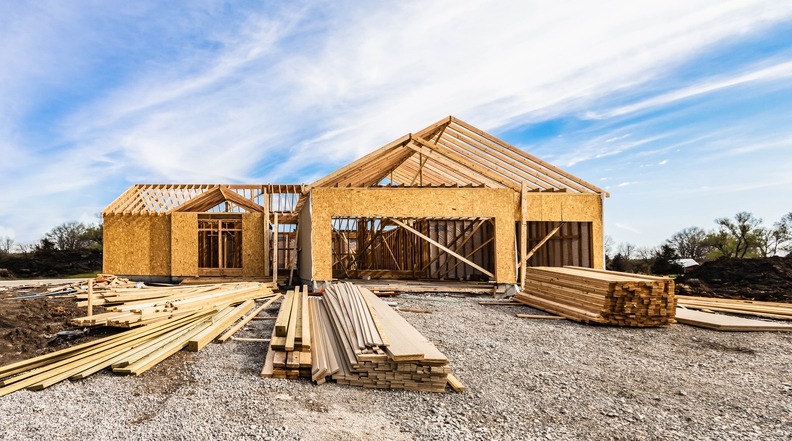Embarking on the journey to build a custom home is both an exciting and complex endeavor. For many, the chance to create a space tailored to personal tastes and needs is a dream come true. However, the process can sometimes seem overwhelming due to the intricate planning and decision-making involved. Understanding each step of the custom home building process is essential in transforming this dream into a reality. In this article, the aim is to clearly outline the steps involved, providing clarity and offering insights into making the process more manageable and rewarding.
Steps in the Custom Home Building Process
The custom home building process consists of several key phases, each requiring careful consideration. Here’s a detailed look at these steps:
Planning and Design
Planning and design lay the foundation for a successful home build. This initial stage is where dreams take form. By working with architects and designers, you can establish a vision for your future home that aligns with both functionality and aesthetics. Key considerations include:
-
Determining the size and layout of the home to accommodate current and future needs.
-
Discussing essential features and lifestyle preferences.
-
Selecting an architectural style that reflects personal taste.
During this phase, securing necessary permits and approvals is critical. It’s necessary to account for the possible timeframes and any local regulation hurdles.
Site Preparation and Foundation
Once plans are in place and approved, preparing the site is the next step. This involves clearing the land, setting up temporary utilities, and ensuring the ground is ready for construction. The foundation is crucial, serving as the backbone of the home. Builders typically use concrete to establish a stable and enduring base. Proper site preparation and foundation work are essential for a solid start, setting the stage for the subsequent building phases.
Framing and Exterior Work
With the foundation complete, the focus shifts to the structural framework of the house. This phase involves constructing walls, floors, and roof structures, giving physical shape to your blueprints. The installation of doors, windows, and the roof covering follows, safeguarding the interior against environmental elements and helping to prevent construction delays. This work is a significant milestone, marking tangible progress on your dream home.
Plumbing, Electrical, and HVAC
After the structure becomes wind and watertight, the essential systems are installed. These include plumbing, electrical wiring, and HVAC (Heating, Ventilation, Air Conditioning) systems. This time is vital to set up:
-
Water and gas lines for reliable utility service.
-
Electrical systems to power appliances and devices.
-
HVAC systems for comfortable living conditions.
It’s important that skilled professionals handle these installations to ensure safety and compliance with local codes.
Interior Finishing
Interior finishing is where the home truly transforms into a personalized space. This phase includes:
-
Installing drywall, painting walls, and adding decorative elements.
-
Selecting and laying flooring, such as tile, wood, or carpeting.
-
Adding cabinetry, countertops, and appliances to the kitchen and bathrooms.
The attention to detail here ensures the home is functional and reflects the homeowner’s personal style.
Final Inspection and Walkthrough
Prior to moving in, a thorough final inspection is conducted to confirm all work meets the agreed-upon standards and is safe. Any last-minute adjustments or fixes are addressed at this stage. Typically, the builder will walk through with the homeowner, reviewing and resolving any concerns. This critical step helps ensure a perfect transition into the new home.
Some people might consider Paradise Valley home remodeling as an alternative to building a new custom home. Remodeling can offer a refreshing change within your existing space, blending the benefits of a familiar environment with modern upgrades.
Exploring Remodeling Options
For those considering other routes, remodeling projects, like home remodeling Cave Creek, can provide substantial changes while utilizing the existing structure. Renovations can range from minor updates to significant alterations, depending on the needs and potential of the existing property. This can be a viable option for those looking to breathe new life into their current home without the full commitment of building from scratch.
Choosing the Right Builder
Selecting a qualified builder is crucial for any custom home project. Their experience and craftsmanship can significantly affect the project’s outcome. Considerations when choosing a builder include:
-
Reviewing their portfolio and previous projects.
-
Seeking recommendations or client testimonials.
-
Ensuring clear communication and understanding of your vision.
A reliable builder will guide you throughout the project, providing expertise and ensuring the highest standards are met. Builders with experience in projects like custom homes in North Peoria bring valuable insights and solutions, tailoring each build to the client’s unique specifications.
Budgeting and Financing
Having a clear understanding of the financial aspects of building a custom home is vital. Establishing a detailed budget with your builder can help manage costs and avoid unexpected financial strain. Important considerations include:
-
Prices of land and initial site development.
-
Materials and labor costs.
-
Potential contingencies for unforeseen expenses.
Evaluating financing options such as construction loans or mortgages designed for custom builds can aid in the financial management process. A financial advisor can provide guidance on the best options available based on individual circumstances.
Managing the Timeline
Timelines for building a custom home can vary, typically ranging from several months to over a year. Factors influencing the timeline include:
-
Weather conditions and seasonal impacts on construction efficiency.
-
Availability of essential materials and skilled labor.
-
Potential delays in acquiring necessary permits and completing inspections.
Maintaining effective communication with your builder can help manage expectations and keep the project progressing smoothly. Flexibility is an asset, allowing for adjustments as necessary without compromising quality or safety.
Closing Remarks
Building a custom home is a significant commitment, offering the opportunity to create a unique living space tailored to personal desires and lifestyles. By understanding the process from start to finish, future homeowners can better anticipate the challenges and rewards of such an undertaking. Whether opting for a custom build or considering alternatives such as remodeling, having a clear plan and support from skilled professionals will ensure a satisfying result. Consideration of all aspects, from design to budgeting, will contribute to the successful realization of this important venture.

